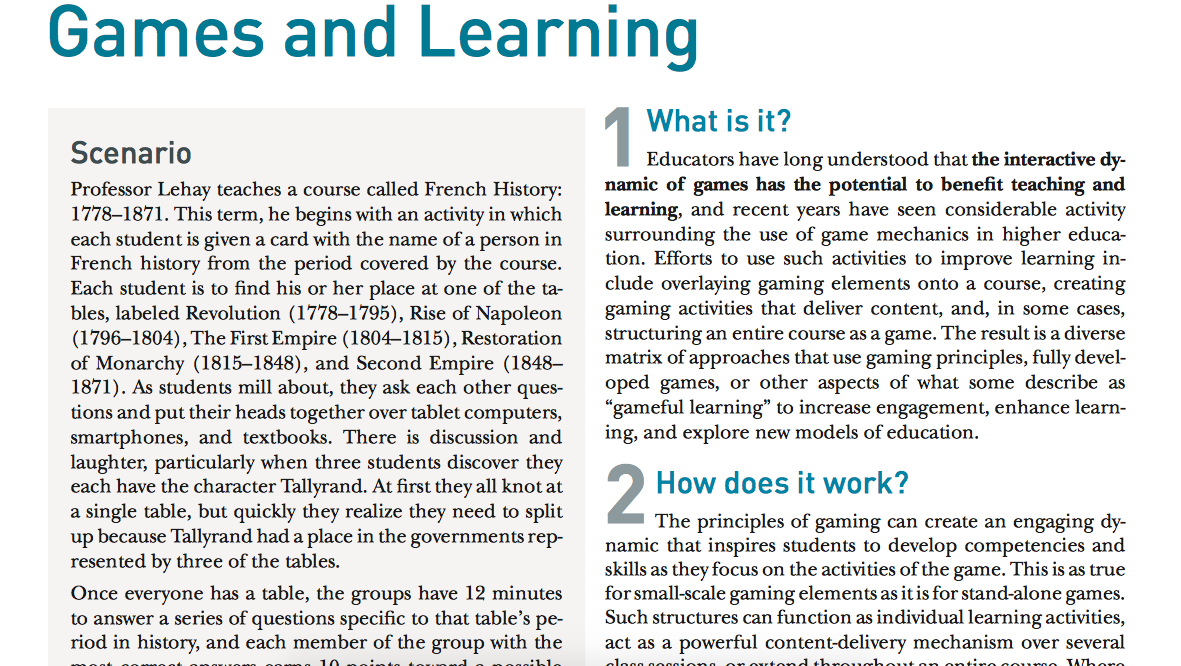 From my understanding gamification is the use of game thinking and mechanics outside of game contexts to engage players in solving problems and increased participation. From what the article 7 Things You Should
Know About Games and Learning said the mechanics of gaming can teach students important lessons and provide rewards for every completed stage. In this way gaming can reinforce concepts taught in the classroom and aid in the delivery of new material. This concept is becoming more common in the higher education environment. It is allowing schools to develop simulations and other activities that can give students important skills for when they graduate.
From my understanding gamification is the use of game thinking and mechanics outside of game contexts to engage players in solving problems and increased participation. From what the article 7 Things You Should
Know About Games and Learning said the mechanics of gaming can teach students important lessons and provide rewards for every completed stage. In this way gaming can reinforce concepts taught in the classroom and aid in the delivery of new material. This concept is becoming more common in the higher education environment. It is allowing schools to develop simulations and other activities that can give students important skills for when they graduate.
The reasons gaming is so effective is because of how games are setup. Game developers know it is important that when a player fails to complete a task correctly to provide immediate feedback to the player in order to keep them interested and make a second attempt. The article Sculpting
Flow and Fiero spoke about how important it is for developing a game to make sure there is an established flow and that players don't meet challenges that are to hard to early in the game, to make sure the level of difficulty matches their current ability. The feeling of the reward is called fiero, it is the feeling we get when we overcome an obstacle. A well designed game takes advantage of this feeling by making tasks more and more difficult leading to bigger reward when they are overcome.
Gaming can be effective in any classroom, the role it can play in an ESL classroom is large. According to the article "Just
Playing Games? A Look at the Use of Digital Games for Language Learning". it is very important when selecting a game because if the game doesn't motivate the students to play they will not get anything out of it. Mentioned was the idea that you could use educational games or commercial games for classroom use if you make the lesson work around such games. For digital games to be affective they have to be completely integrated into the classroom plan, if they are just extra credit the students will not get full advantage of its use. The process pictured below is important in establishing a lesson plan around a game. I think there are some fun ideas mentioned in the article about games involving exploring their city or campus to find clues using their smartphones. Taking advantage of games which almost all students play to help them with learning can create an activity which the students get a lot of enjoyment and information retention from.

No comments:
Post a Comment